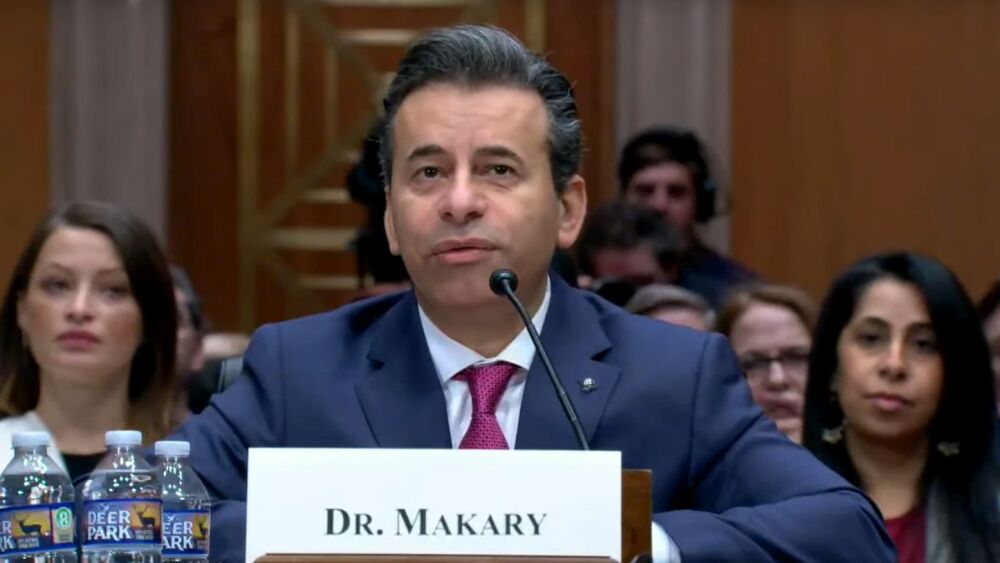Werner held roles at Bristol Myers Squibb, AstraZeneca and Novartis before landing at Alltrna, where she works to develop tRNA-based treatments for a range of diseases.
In the late 1990s, Michelle Werner was a fresh college graduate working as a clinical data manager at Beth Israel Deaconess Medical Center when she met a cancer trial participant whose memory she still carries.
“We formed a bond, and then unfortunately he passed away while he was [in] the trial, and I happened to be there when he passed away,” she told BioSpace. “I realized how we really need to do better as an industry to get better medicines out there to patients, because patients are giving their all when they’re fighting some of these diagnoses. . . . I wanted to be part of a movement that was going to hopefully be able to bring some transformative therapies to patients.”
Then, in 2020, while Werner was serving as AstraZeneca’s global hematology franchise head, her son was diagnosed with Duchenne muscular dystrophy on his 10th birthday, and her experiences researching care for him only solidified her mission.
“The standard of care in Duchenne was and still is basically high dose daily steroids, which really don’t do much for the disease itself and actually have a really horrible side effect profile,” she explained. Werner looked up Duchenne studies on the National Institutes of Health’s clinicaltrials.gov database but found that her son wasn’t eligible for any of them. “That experience really cast a spotlight on . . . the inadequacies of where we are with rare genetic diseases,” she said.
Now, as CEO of Alltrna and a CEO-partner at Flagship Pioneering, Werner is working toward developing tRNA-based medications to remedy that problem. Alltrna emerged from stealth in late 2021 with the announcement that Flagship had invested $50 million in the startup, calling it “the first transfer RNA (tRNA) platform company to unlock tRNA biology and pioneer tRNA therapeutics to regulate the protein universe and resolve disease.” Werner took the helm in April 2022. The following year, Alltrna raised $109 million in a Series B.
The ambitious aim of developing therapies for multiple untreated diseases comes with corresponding hurdles. No tRNA drugs have so far made it to the market, or even into clinical trials. Earlier this month, fellow startup HC Bioscience abruptly shut down after analyzing preclinical data on a tRNA candidate, with its CEO citing “challenges in targeted delivery and other factors.”
From Cancer to Rare Disease
Prior to joining Alltrna three years ago, Werner held oncology-related and other roles at not only AstraZeneca, but Bristol Myers Squibb and Novartis. During this time, Werner was focused on aspects of commercialization, sales, marketing and market access, but she wondered whether she had the right skills to lead the Alltrna team, made up mostly of scientists. “I had to really brush [up on] a lot of understanding of basic science research,” she noted.
In the end, though, “what I realized is that early- or late-stage, scientists or commercial—really what I think people need is an understanding of the vision and what the strategy needs to be in order to be able to work towards that vision, and to really understand the purpose of the company and what we’re striving to do.”
With thousands of known rare genetic diseases and few with approved treatments, Werner said she was drawn by Alltrna’s approach of developing drugs that can be used for multiple conditions. “Even with novel modalities like gene therapy and gene editing and mRNA, each one of those must take a disease-by-disease strategy, or gene-by-gene or protein-by-protein, so in essence we’re really tackling them one at a time,” she explained.
Alltrna’s approach is different. As its name suggests, Alltrna is developing drugs based not on genes, proteins or mRNA but on tRNA, the macromolecules known for ferrying amino acids to ribosomes to be added to new proteins during translation. Multiple genetic diseases can be traced to stop codon errors, in which a DNA sequence that should code for an amino acid instead tells the ribosome to prematurely terminate the build, resulting in a protein that’s ineffective or missing altogether. Alltrna is developing an engineered tRNA to correct these stop codon errors, allowing translation to continue despite the error.
Since Werner took the helm at Alltrna, the company has gone from having some promising in vitro and cell culture data to “a much more robust preclinical proof of concept with our engineered tRNAs across, now, not just one but three different disease mouse models,” she said, as well as some work in nonhuman primates. Alltrna is now conducting investigational new drug-enabling work toward launching clinical trials of an engineered tRNA in several rare liver diseases using a concept called a basket trial that’s borrowed from oncology, Werner said. The idea is to enroll patients with multiple diseases stemming from the same underlying mutation into the trial and treat them all with the same engineered tRNA, which would be delivered to hepatocytes via lipid nanoparticles.
“I’m really excited about the possibility . . . if what we’re seeing in mice translates into humans, this could be really profound, and I’m really eager to demonstrate that.”
A Patient Focus
Based on her personal experience, Werner brings to her CEO role an appreciation for the importance of the patient’s perspective. “As I joined Alltrna it’s something that I made a priority from within my first month or two, to start engaging with patient groups. Because I know that they really are the keepers of the most up-to-date information about what the standard of care is and what innovations are being explored there.”
She added that the groups can provide “incredible insights” about what they think are the important endpoints for a therapy to achieve. That way, “as we think about putting clinical trials together . . . we start planning for what the patient expectations are already from day one,” she said.
In addition to her enthusiasm about Alltrna’s science, Werner sees reasons to be excited about the rare disease space as a whole. “I think that we’re really approaching the golden age of drug development for rare diseases because of the work that’s been done over the course of the last decade to really understand DNA and RNA and how all these might translate into new approaches for genetic diseases,” she said.
“The science is possible, the tools are there, but really what we need to do as a field and an industry is work with a sense of urgency that we’ve never had before. Because patients do not have time to wait.”






